The flowers of this prairie inhabitant have eluded me for years. Fortunately, I have friends with better timing.
Leadplant (Amorpha canescens) is indigenous to most of the Midwest and plains states, but it’s not one of those native plants you’ll often see along the roadside, like ironweed.
Although leadplant (sometimes called lead plant) is not rare or threatened, I’ve only found it in good-quality prairies, where it “tends to grow in clumps.” The Illinois Wildflowers website validates my experience: “The presence of Leadplant is a sign of high quality habitat. Because of its deep roots, recovery from fire is very good.”
Speaking of which, the Friends of the Eloise Butler Wildflower Garden website notes that “The alternate name ‘Devil’s Shoestrings’ comes from the deep roots which farmers were never able to plough out.” The more common name of leadplant comes from “the whitish or hoary color tinge from the fine leaf and stem hair.”
A few tips for gardeners, also from Illinois Wildflowers:
Leadplant is not particular about soil type, and it will flourish in loamy, sandy, gravelly, or clay soil. This plant adds nitrogen to the soil. Partial sun is tolerated, but it will flower less abundantly and have a tendency to sprawl. Leadplant is easy to grow, but slow to develop – flowers may not appear for at least 3 years. A wire fence or cage may be necessary to protect young plants from rabbits and other herbivores.
The foliage can appear months before the flowers. I took this picture on a visit to the never-plowed Tipton Prairie in Green County in May 2017.
Every summer I aspire to photograph leadplant at the peak blooming period, but I never catch it at the right time. Wendie Schneider kindly gave me permission to publish the next four pictures, which she took a few weeks ago in Story County.
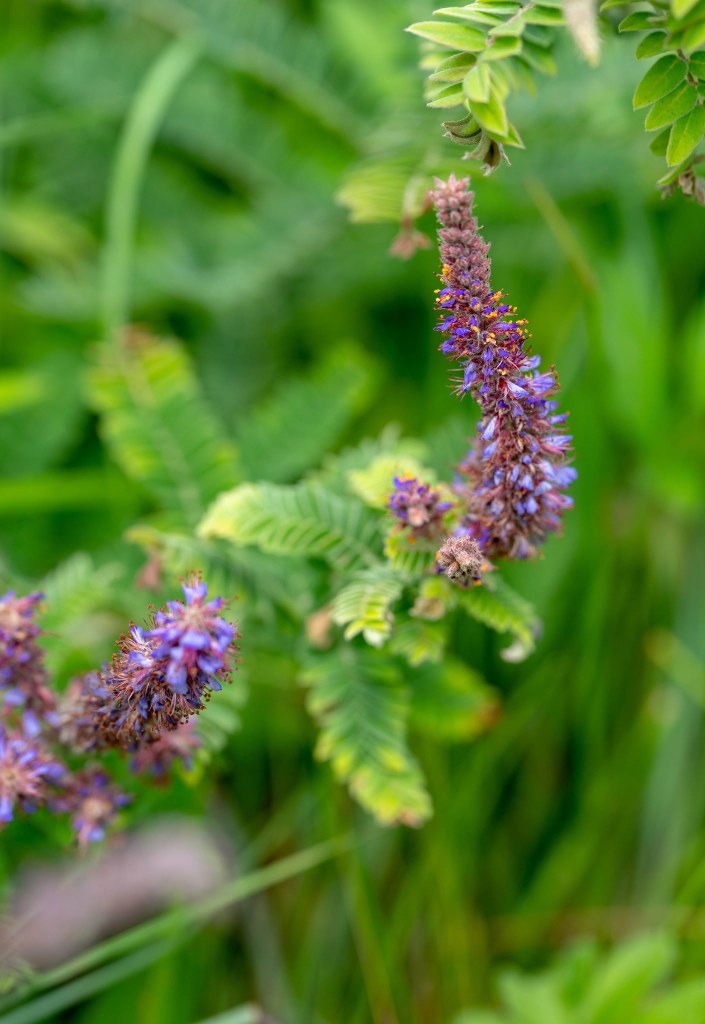
Leadplant flowers “attract long-tongued bees, short-tongued bees, and wasps primarily,” according to Illinois Wildflowers. But some butterflies enjoy the nectar too, as Wendie captured here. Insect identification is not my strong suit, but Wendie thinks this is a banded hairstreak.
Katie Byerly contributed the next five photographs of leadplant she found growing in Cerro Gordo County this month. The plants with orange flowers in this picture are butterfly milkweed. Near the upper right you can see purple prairie clover plants that have finished blooming. Near the upper left, pale purple coneflowers approaching the end of their flowering period.
More leadplant with butterfly milkweed:
The whitish tinge on the leaves and stem is apparent here:
Katie provided a couple of close looks at the flowers:
Mike Delaney gave me a heads up shortly before the Fourth of July that leadplant was blooming on his restored prairie in Dallas County. I kept putting off my visit due to other projects and hot, sunny weather. By the time I got there on the evening of July 12, the flowers were well past their prime.
Minnesota Wildflowers describes the fruit of leadplant as a “densely hairy pod with the remains of the pistil at the top. The pod contains a single seed.” On a visit to Tipton Prairie in September 2019, I took the next two photos of plants with pods developing.

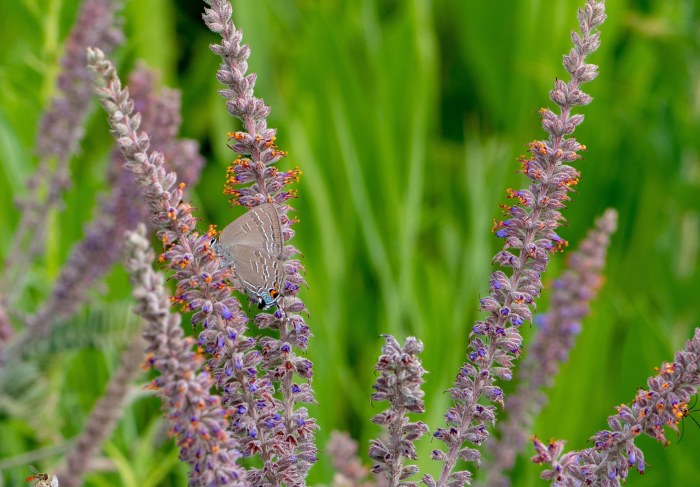
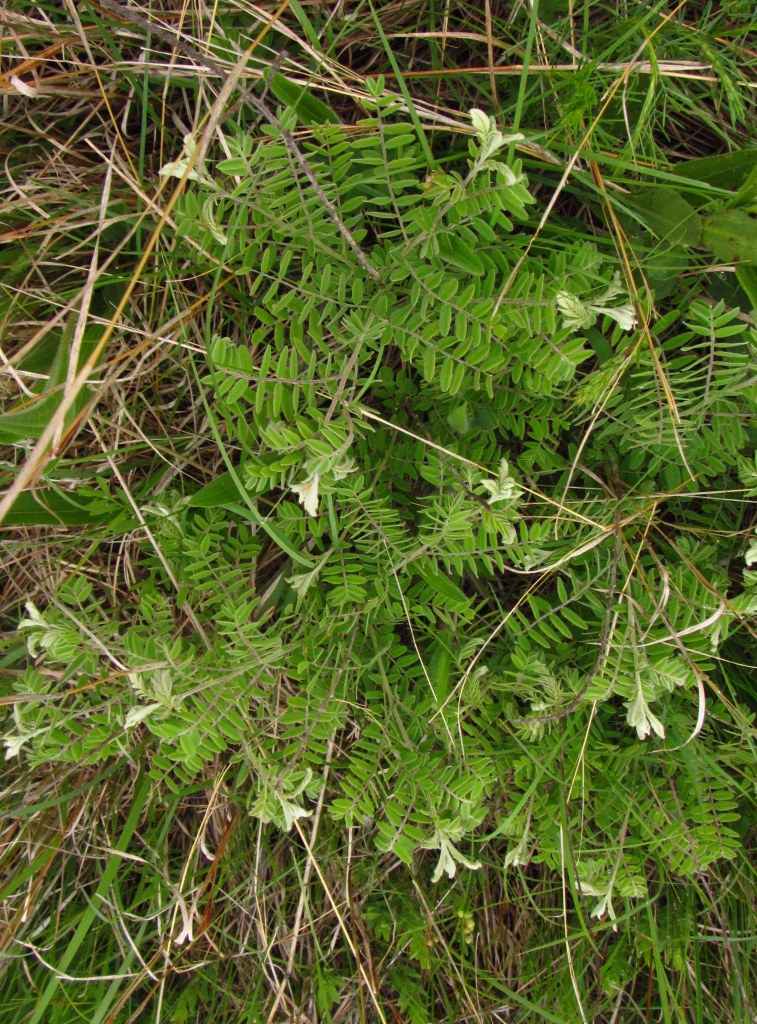
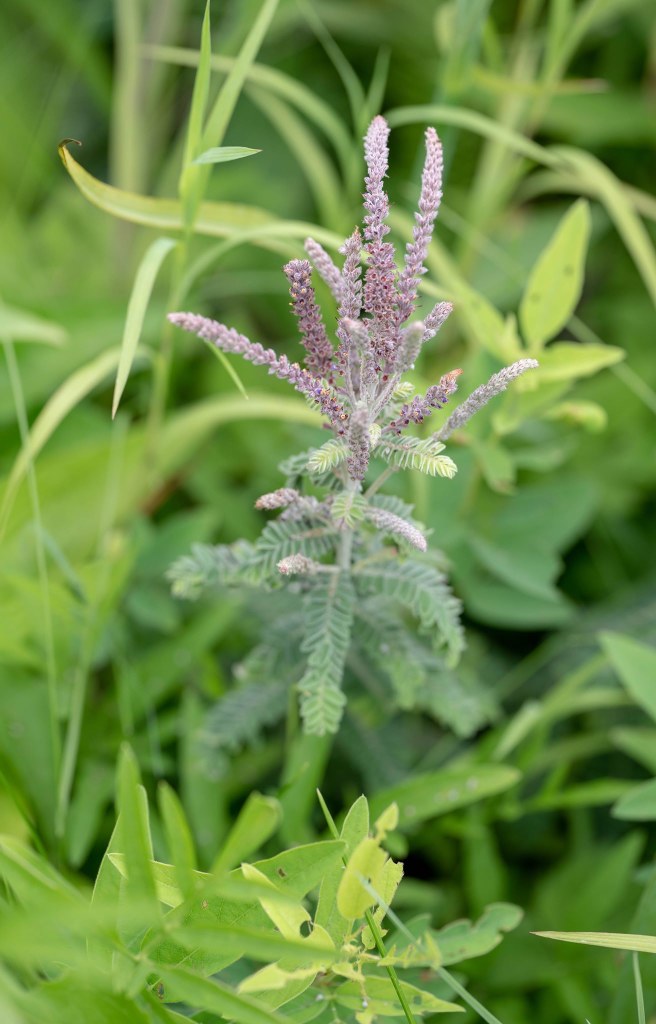
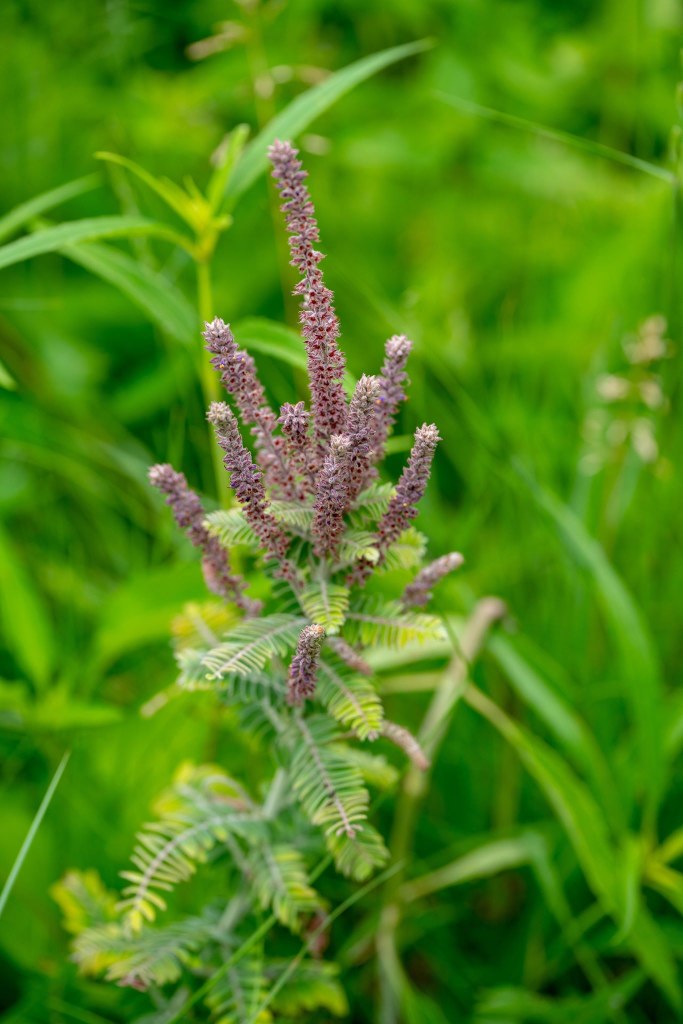
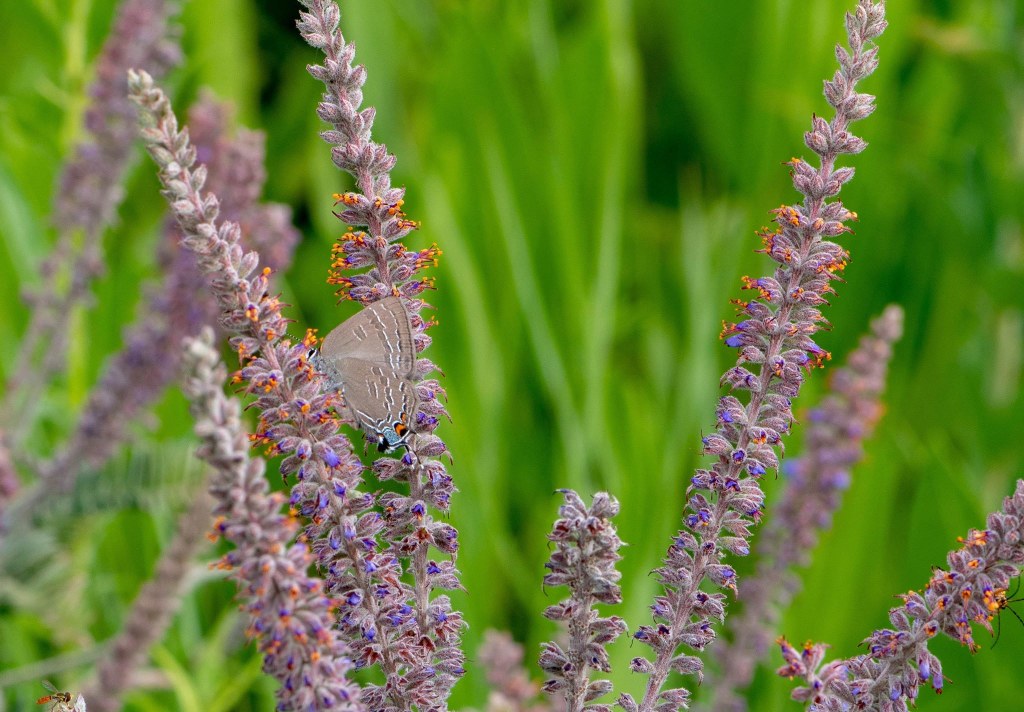
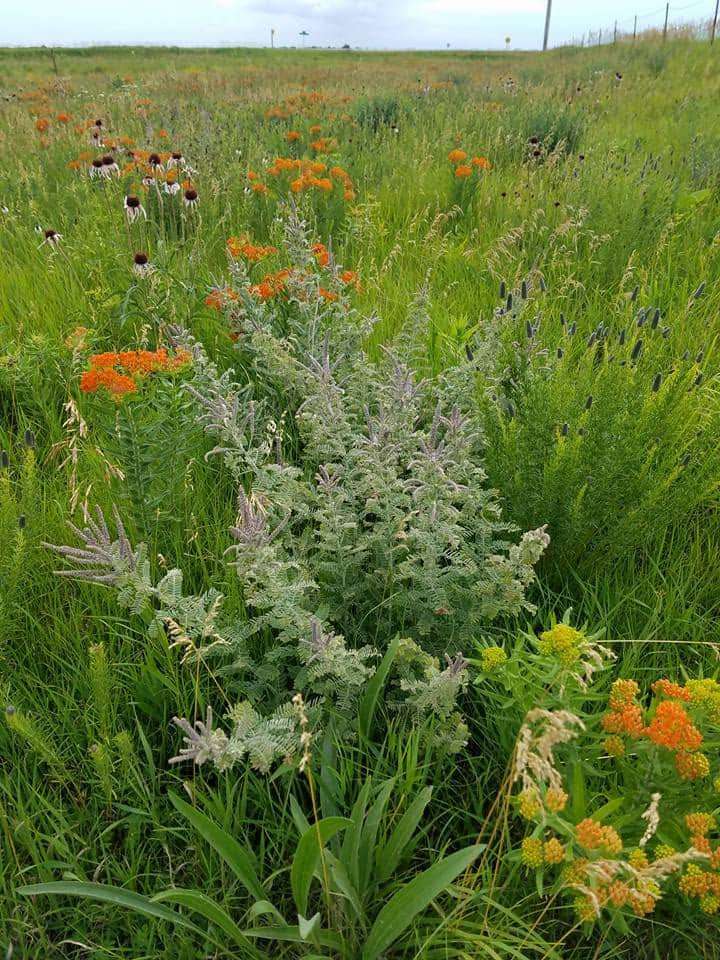

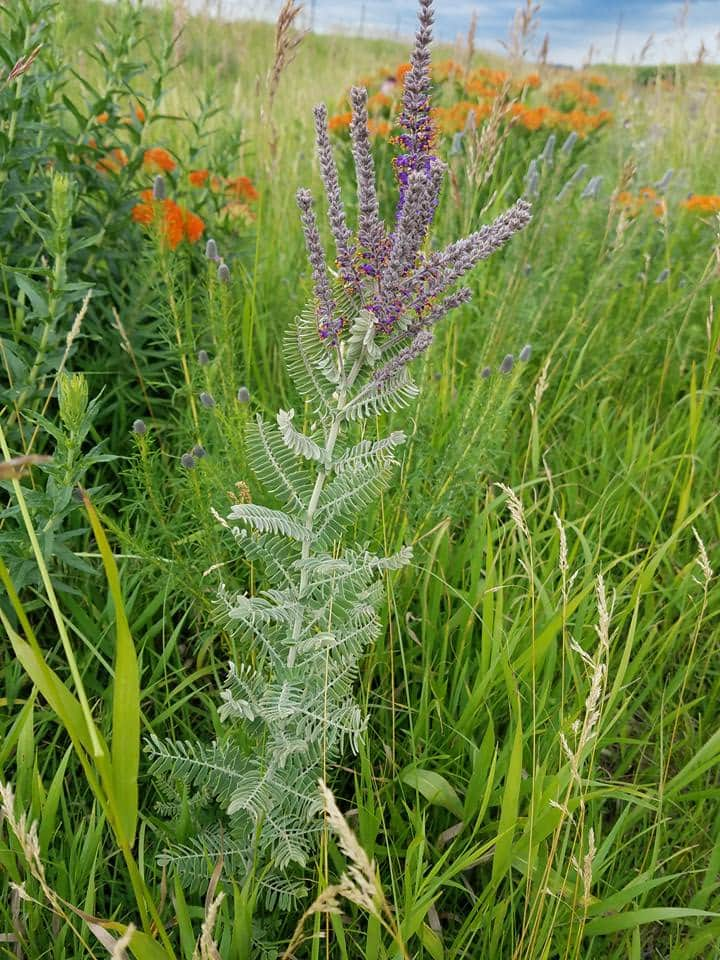
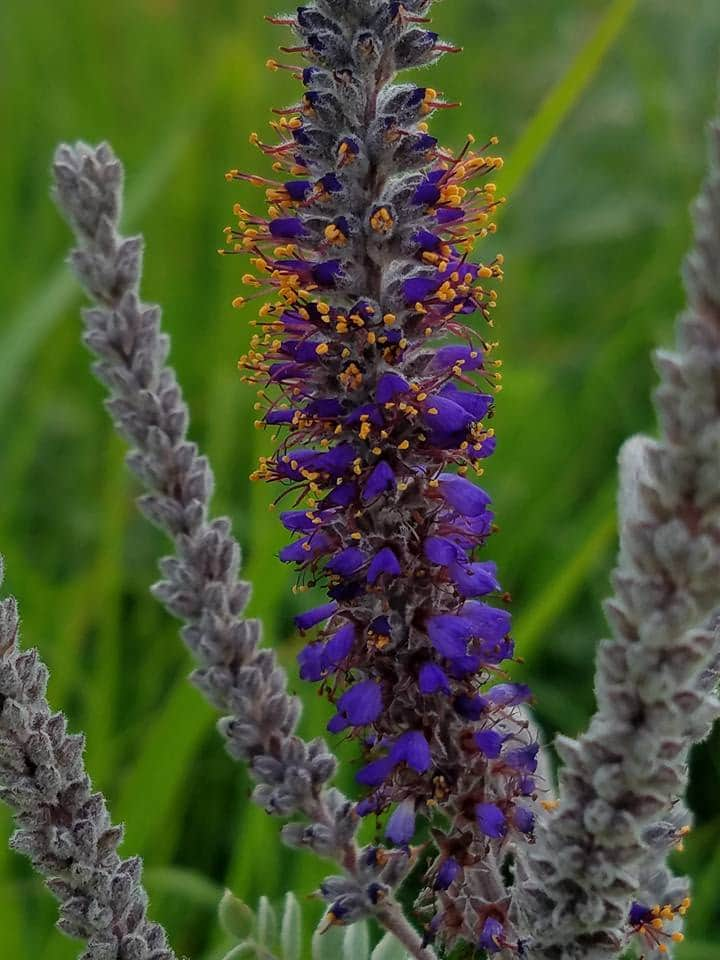
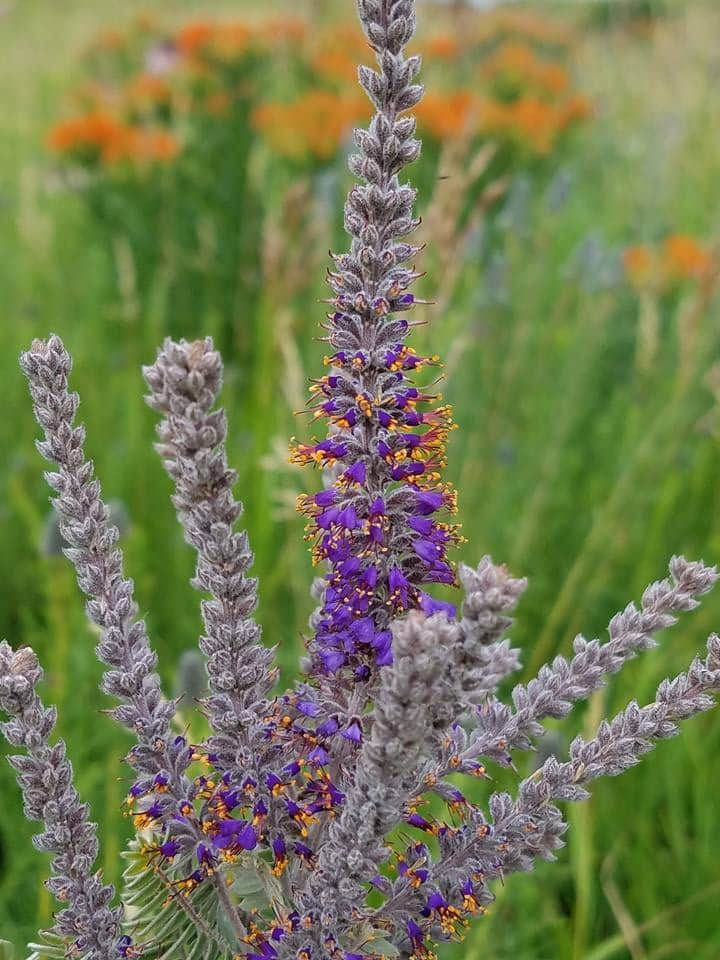
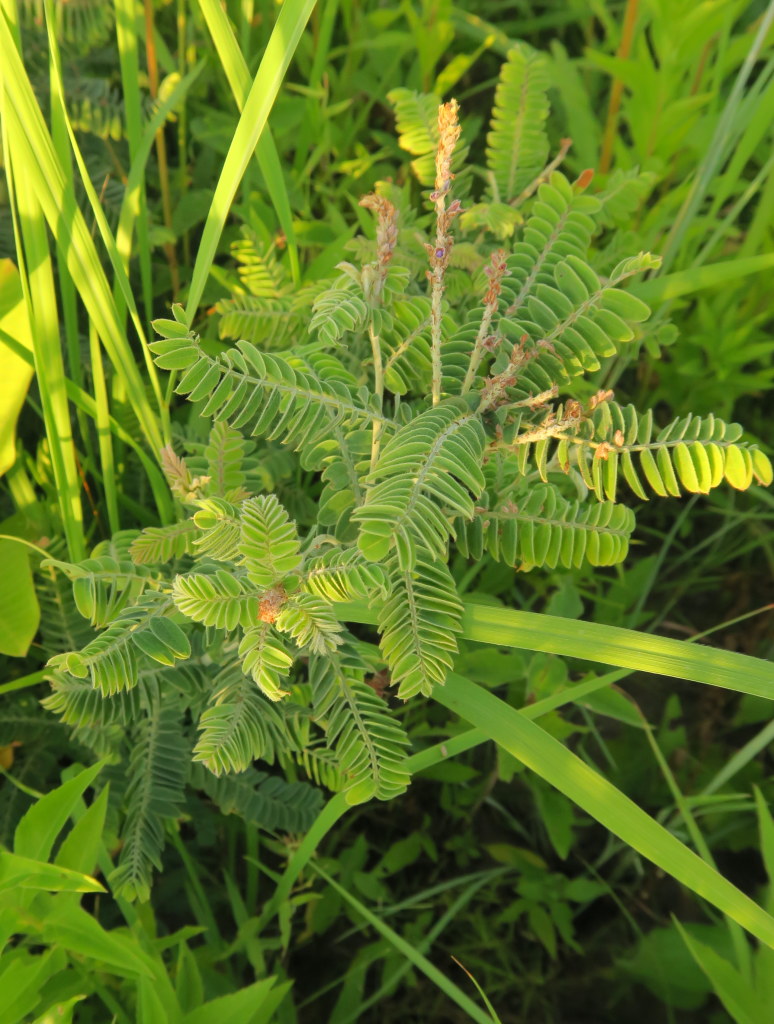
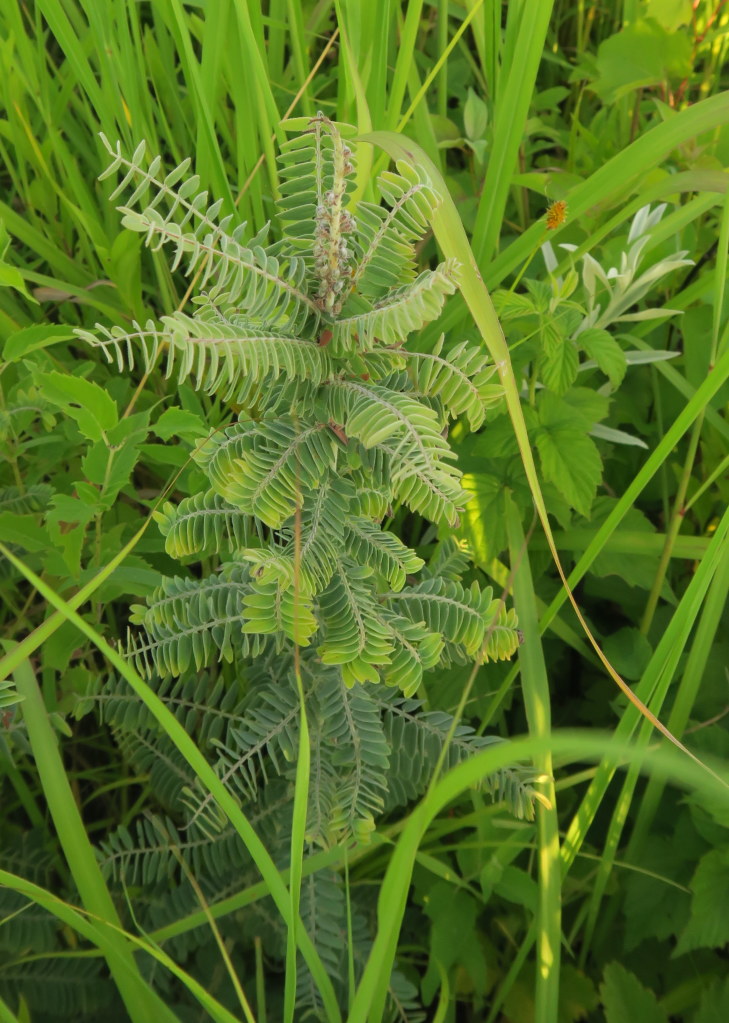
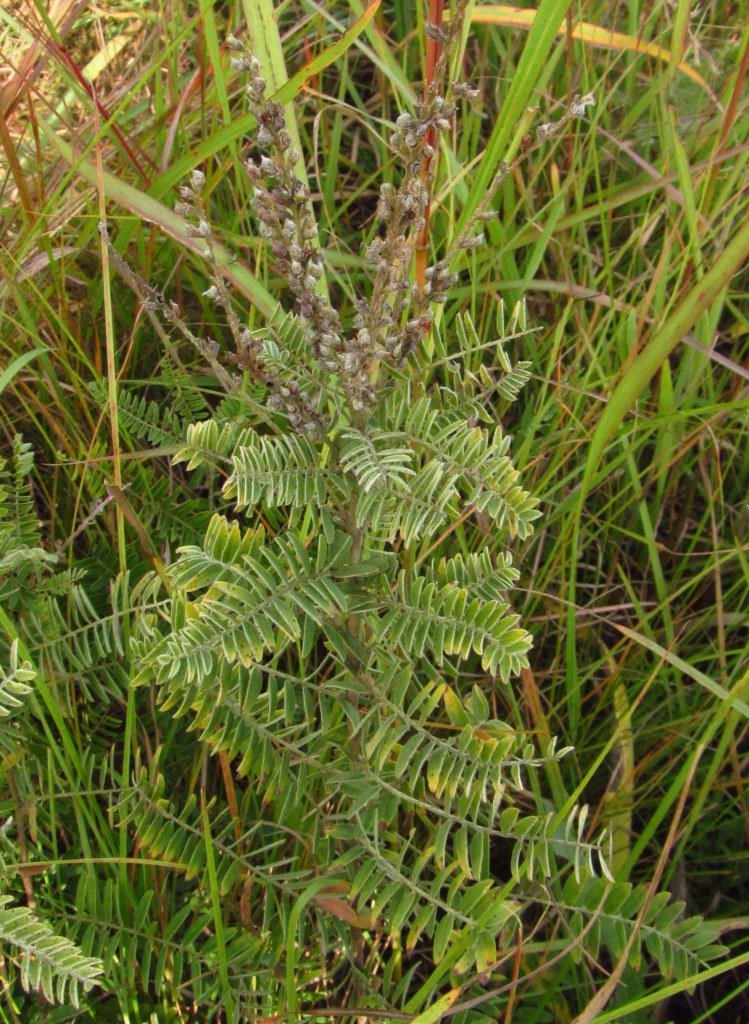
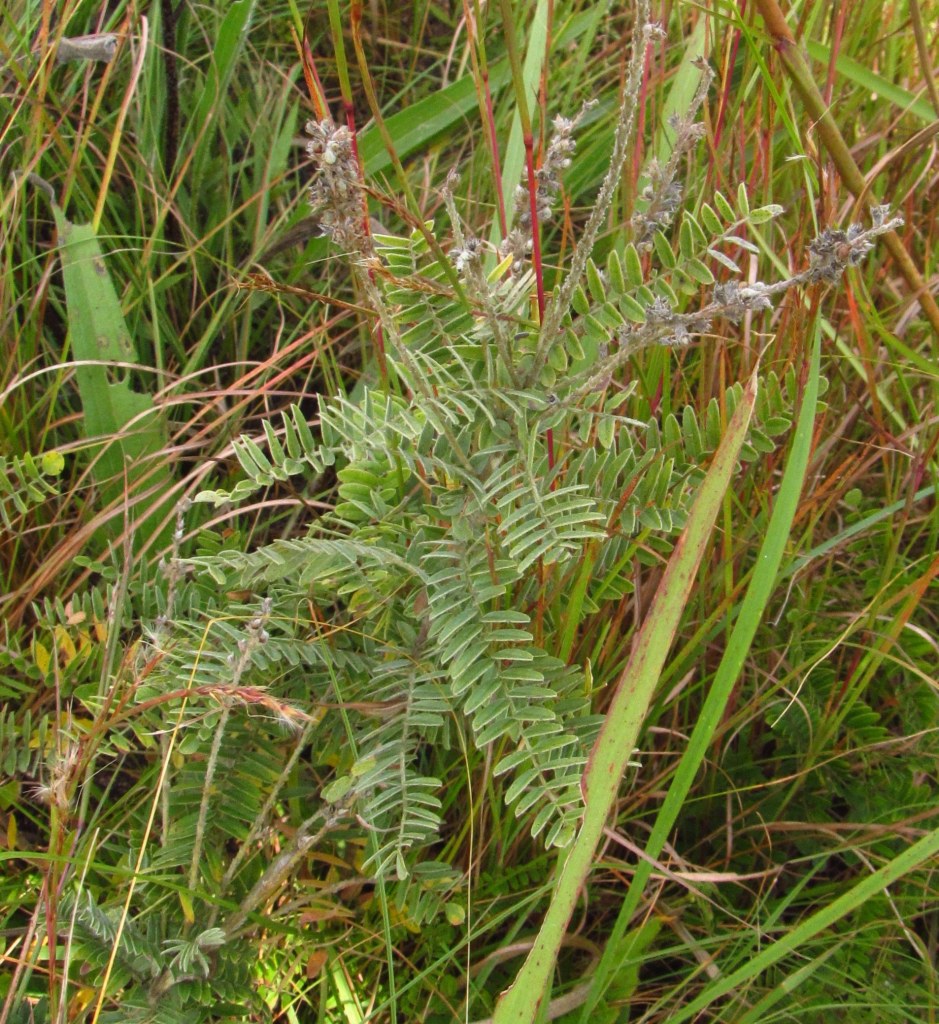
1 Comment
Nice photos of a very nice plant
It’s possible for lots of leadplant to grow in a reconstructed prairie. The useful and sometimes humbling lesson learned from watching diverse prairie reconstructions over significant time (meaning twenty-plus years rather than three or four) is that the plants ultimately sort themselves out and decide where they will and won’t grow. It’s not like gardening. And we don’t know yet what diverse sixty-year-old Iowa prairie reconstructions will look like — should be interesting.
PrairieFan Thu 30 Jul 7:23 PM